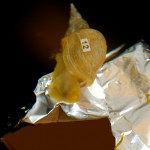
People with more grey matter in a particular region of the brain are more likely to help others, researchers suggest.
How often do you behave in a way that helps others without being motivated by some sort of reward? Scientists from the University of Zurich, Switzerland, have found a possible reason why there are such enormous differences in human altruistic behaviour and it is related to the amount of grey matter in the right temporoparietal junction (TPJ) of the brain.
Therefore your answer to the question above might be hardwired in your individual neural circuitry. Which means neuroscience could actually begin to explain the differences between those highly altruistic people such as Mother Teresa, and the more selfish individuals of our species.
The easiest way to study altruism in humans is by analysing individuals’ choices involving the gain or loss of money. So in the current study, subjects were asked to split money between themselves and anonymous partners in a series of trials. Voxel-based morphometry (VBM) was used to examine the participants’ brain activity while they were making their choices.
The researchers found that those participants who made altruistic choices — such as allocating money to others instead of keeping it — had a higher volume of grey matter, and greater activity, in their TPJ.
Telling the subject how much money the other subject had prior to making their choice had a significant effect. For example, when it was known that a particular subject had lots of money, the other would be less inclined to allocate them more money. And they were more inclined to keep it for themselves.
“This indicates that participants are more willing to behave altruistically if altruistic acts decrease inequality”¦ rather than increase inequality”¦ suggesting that fairness concerns affect the motivation for altruistic acts,” explained the researchers in their paper published in Neuron.
Redzo Mujcic from the University of Queensland, who was not involved in the study, was impressed by the clever and simple methods employed by the researchers. He also said the findings are interesting and important as they provide a first look at the potential link between prosocial preferences and brain activity.
“The visual design makes the task (choice situation) at hand clear and simple to understand by the subjects compared to the standard written questionnaire setting; potentially leading to more accurate preference elicitations,” explained Mujcic.
However, he also said because this research field and the techniques used are relatively young, many more studies will need to be done to determine the causality and robustness of these findings.
Mujcic brought up the interesting point that elderly individuals have been found to be more altruistic than the young. As the mean age of participants in the present study was only around 23 years old and most of them were university students, this lack of variation could possibly have had an impact on the results.
Lead researcher, Yosuke Morishima, said that she plans on conducting similar experiments with autistic participants and people with psychiatric disorders. She explained that people with autism have difficultly understanding others intentions and mental states, resulting in problems with social interaction. However, she thinks that acting altruistically does not require the ability to understand others’ mind states because it is unidirectional. She plans to confirm this hypothesis in future studies.
Source: Neuron






